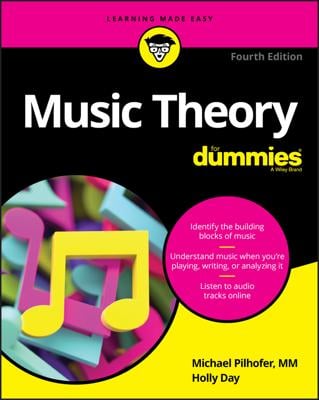It’s important for contemporary musicians to understand the music theory behind the music they play. Most early rock and pop songs follow the structure of either the 12-bar blues or the 32-bar blues.
Chuck Berry’s “Johnny B. Goode” is one variation of the 12-bar blues structure used in rock, as is the Rolling Stones’s “19th Nervous Breakdown.” The Beach Boys were masters of the 32-bar structure, using it in such songs as “Good Vibrations” and “Surfer Girl.” The Beatles also used this structure in many of their songs, including “From Me to You” and “Hey Jude.” Jerry Lee Lewis’s “Great Balls of Fire,” The Righteous Brothers’s “You’ve Lost That Loving Feeling,” and Led Zeppelin’s “Whole Lotta Love” all also use the AABA 32-bar.
In 32-bar pop music, the music is broken into four 8-bar sections. Songs like Fats Waller’s “Ain’t Misbehavin’” and Duke Ellington’s “It Don’t Mean a Thing” follow the AABA 32-bar structure, whereas Charlie Parker took the rondo approach (ABAC) to the 32-bar variation in songs like “Ornithology” and “Donna Lee.”
Compound AABA form really should be called AABAB2 form (but it isn’t), because in this form, after you play the first 32 bars, you move into a second bridge section (B2) that sends you right back to the beginning of the song to repeat the original 32 bars of the song. The Beatles’s “I Want to Hold Your Hand,” The Police’s “Every Breath You Take,” Boston’s “More Than a Feeling,” and Tom Petty and the Heartbreakers’s “Refugee” all follow this pattern.
The verse-chorus structure (also called ABAB form) is the most widely used form in rock and pop music today. Verse-chorus form follows the structure of the lyrics attached to it. You can, of course, write an instrumental piece that follows the same pattern as a verse-chorus rock or pop song, but the structure itself gets its name from the way the words in a song fit together.
Verse-chorus songs are laid out like this:
Introduction (I): The introduction sets the mood and is usually instrumental, although sometimes it may include a spoken recitation, like in Prince’s “Let’s Go Crazy.”
Verse (V): The verse begins the story of the song.
Chorus (C): The chorus is the most memorable lyrical points of the song — the song’s hook.
Verse (V): Another verse continues the story.
Chorus (C): The second chorus reinforces the hook.
Bridge (B): The bridge, which may be instrumental or lyrical, usually occurs only once in the song and forms a contrast with the repetition of verses and choruses.
Chorus (C): The final chorus repeats the original chorus to fade, or it just stops at the I chord.
The typical rock and pop song structure is IVCVCBC. And just as in the 12-bar blues structure, the chords of choice are the I, IV, and V chords.
Thousands, perhaps even millions, of popular songs follow this structure. The Beatles’s “Ob-La‐]Di, Ob-La-Da,” Tom Jones’s “Sex Bomb,” Kenny Rogers’s “The Gambler,” Lady Gaga’s “Poker Face,” and Eminem’s “Lose Yourself” are all examples of this structure used in contemporary pop music. The really amazing thing is how different from one another, either by virtue of lyrics or the music itself, one song can sound from the next.

